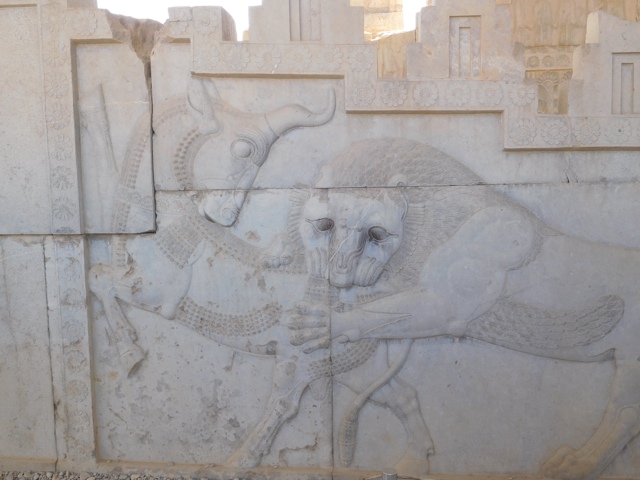Shiraz was once the route from Susa to Persepolis but settlement here truly prospered from the early Islamic era, burgeoning quickly into a grand walled city.
A beautiful garden named after one of the four gardens of paradise described in the Quran. The garden and grand house were originally created by a chief of the Qashqai clan around 1823, with the house later rebuilt by Hajji Mohammed Hasan Mi'mar, following his successful pilgrimage to Mecca, to include fine reception rooms, an orangery,stables and pavilion.
Most of the plants and trees are labelled with their Farsi,Latin and common English names. This is a popular location for parties of young schoolchildren on day trips. University students enjoy the gardens, as well.
The most popular shrine is the large one to the right after entering the courtyard, which commemorates the brother of the 8th Imam Reza, Sayyid Amir Ahmad. The tomb of another brother, Syyid Mir Mohammed, is situated further down. Sayyid Amir Ahmad came to Shiraz in 808 AD and died here in 835AD. Only a mihrab remains from the mausoleum and the madrasa built to honour him in the 1340's by the mother of the then local ruler. Its local reputation was such that Nadar Shah Afshar, despite being a Sunni Muslim, ordered repair work in 1729 after the earthquake in 1588.
What is seen today is essentially 19th century, expecially the mirror work smothering the interior, the silver doors and tilework, but the exterior dome is a 1959 creation; the minaret dates 1970.We were able to see a procession that honored the aniversay of the death of Syyid. It was incredibly moving.
"Pink Mosque". It's a two - ivan mosque built 1876-87 by Mohammed Hassan with a covered arcade, and a winter mosque. The entry vestibule is smothered in painted tiles of floral ornaments framing small pictures of landscapes clearly inspired by Russian sketches. The winter prayer hall has stone cable-spiral columns and vividly coloured window glass dates from the 19th century.
Looted by Alexander the Great around 330 B.C., home to the King of Kings for over 200 years, this archaeological site was lost under the Persian deserts for hundreds of years. Modern excavation began in the 1930's, around the time Persia became the Islamic state of Iran. Originally named Parsa, and known in the ancient world as the "wealthiest city under the sun", the Greeks who ruled it called it Persepolis, "The city of the Persians".Today , people flock here to marvel at its grandeur, and Iranians seek to connect to their Persian roots, often make pilgrimages here.
Several remains of government buildings, Gate of All Nations; the Palace of 100 Columns; Palace of Darius.
Darius the Great began construction around 515 B.C. When Alexander the Great looted it in 330BC, it took him, 10,000 mules and 5,000 camels to carry away the treasures from this revenge attack for the Archaemenid firing of Athens. Engineers came from Greece to quarry the stone. The 30,000 year old clay tablets thate were uncovered with thier wealth of detailed information.
The mystery of the complex remains an intriguing mystery. Susa was the Achaemenid winter capital and Hamadan the summer residence. But Persepolis? on the evidence of low reliefs showing visitors bearing gifts, and lions attacking bulls (Leo ascendant over Taurus), many assume Persepolis was used once a year to celebrate Nou Rouz, the spring equinox, but such festivities ae not mentioned in Archaemenid and later sources. There seem to have been only two occasions when the ruler received gifts: on the imperial birthday, and the annual sacrifice to Mithra.
The first, on the left, was probably the tomb for Darius II 405BC (died); next for Artaxerxes II died 424B.C.; the third for Darious the Great 486 B.C. (died); and the last was carved for Xerxes the Great 486B.C. died; or possibly Xerxes II 423 B.C. (died).
SCENES ON OUR TRAVELS
Scenes in a market.....our favorite things, pistachios
Our wonderful Iranian friends, Cyrus and Hadi, who made our journey memorable..
Making friends along the way...
AN INCREDIBLE JOURNEY....


























 or is it this group?
or is it this group? here I am blending in....and we are all blending....
here I am blending in....and we are all blending....























































 SAD that our flag is not in this grouping of allies......
SAD that our flag is not in this grouping of allies......

No comments:
Post a Comment